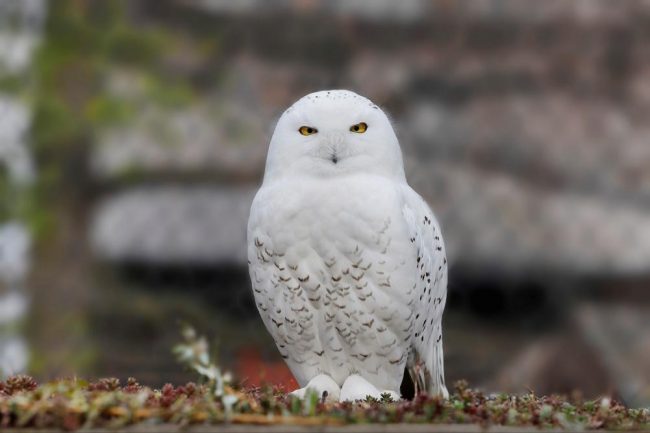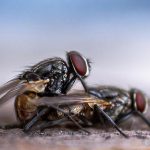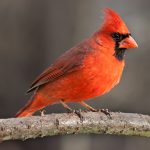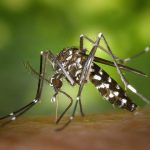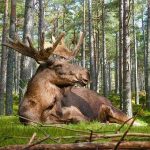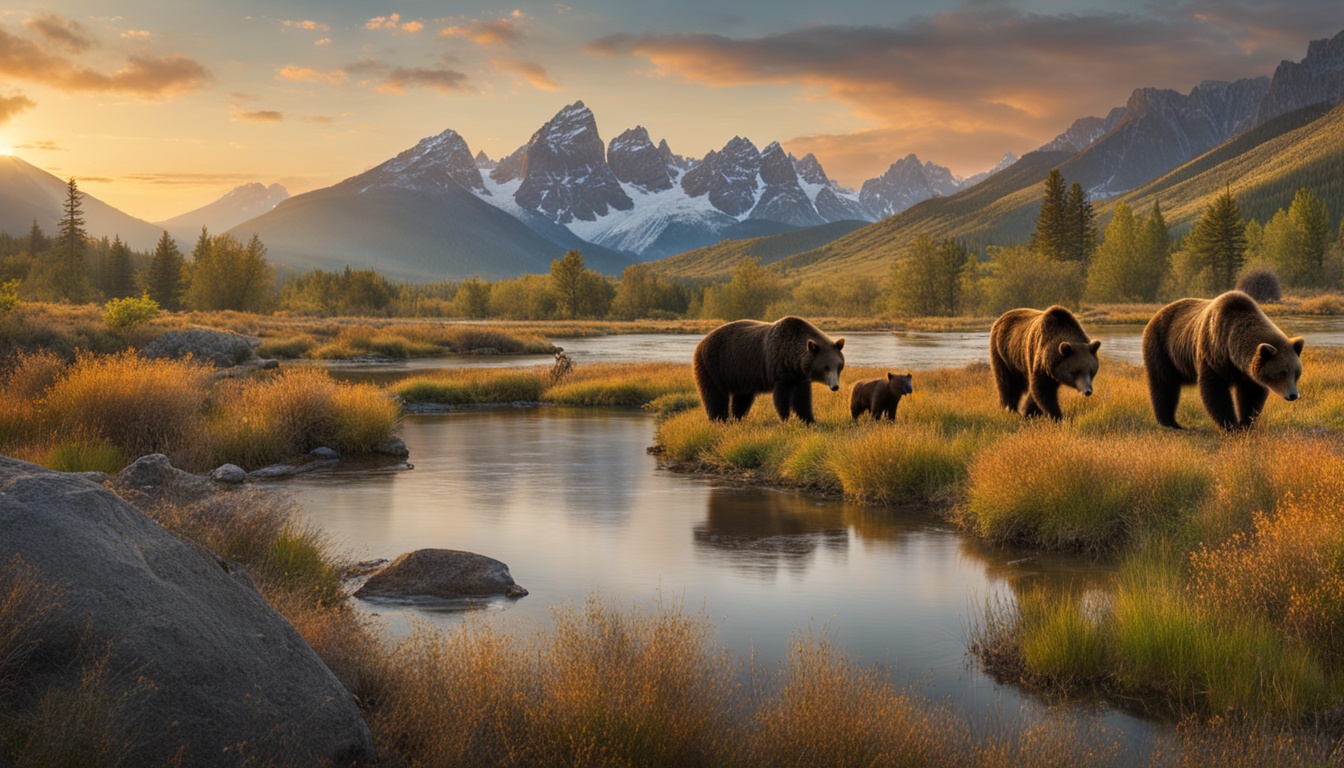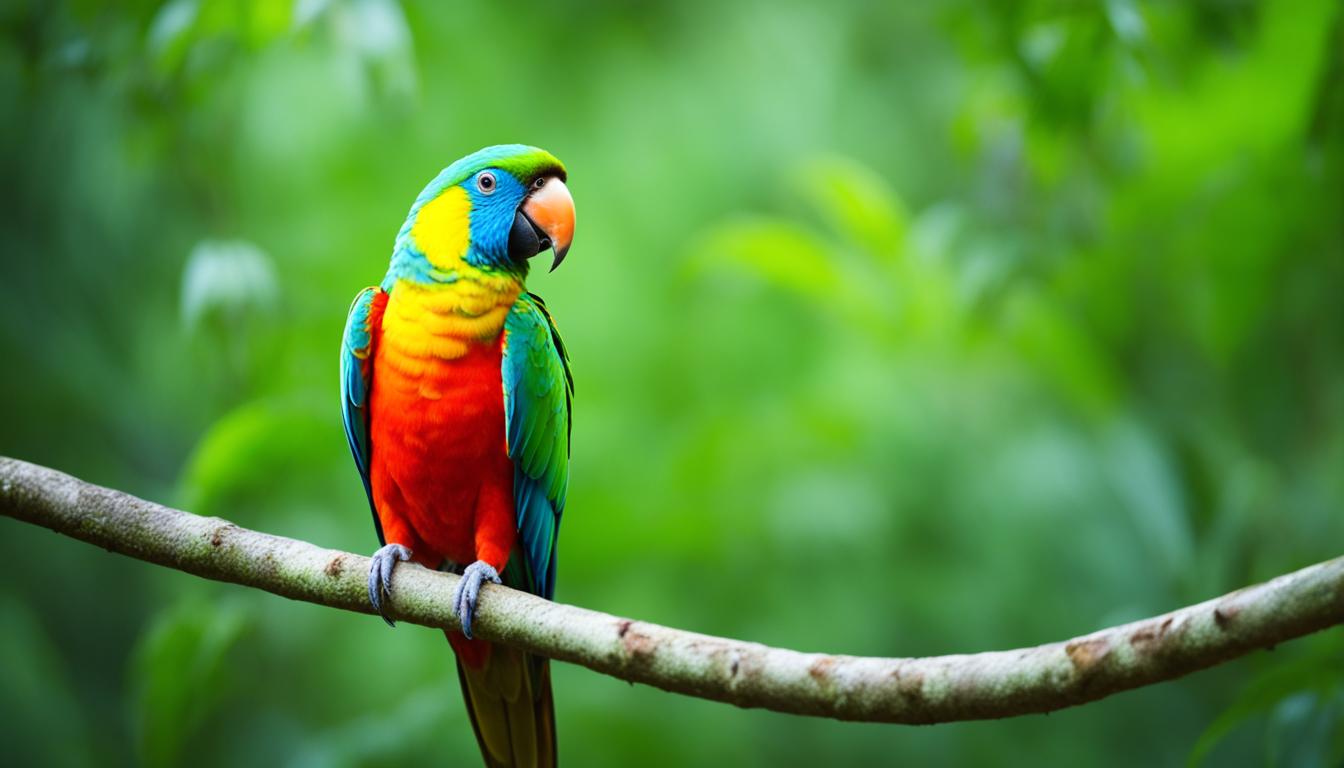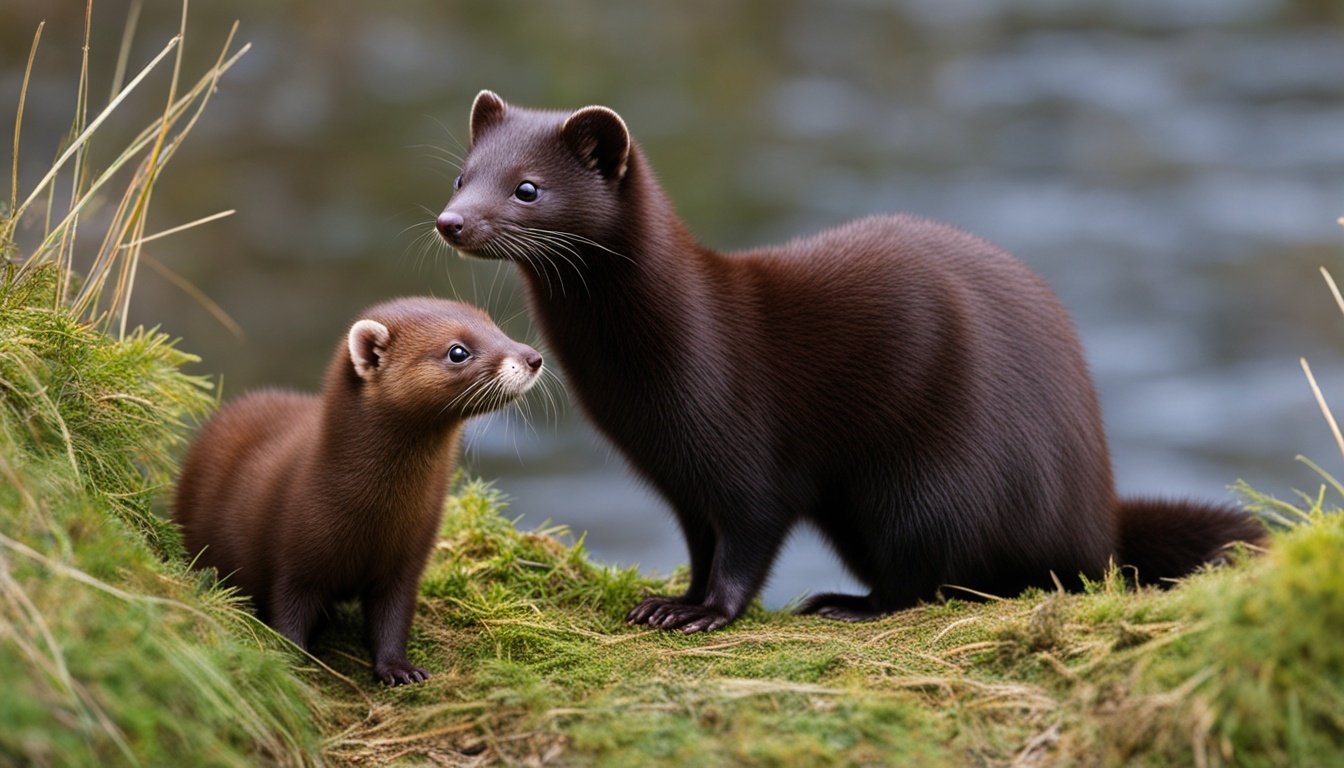The North Pole is an area of the Earth that is always covered with snow. A wide variety of organisms may thrive in this very cold climate, from microscopic zooplankton to enormous whales. The animals and plants that inhabit this region have adapted to the severe conditions that exist here. Fur, fat, and feathers are natural defenses against the severe conditions they face. Approximately 400 types of fish, 20 species of mammals, and 100 species of birds may be found at the North Pole. The North Pole does not have cute penguins like everyone thinks.
Snow bunting
| Scientific Name | Plectrophenax nivalis |
| Type of Animal | Bird |
| Diet | Omnivore |
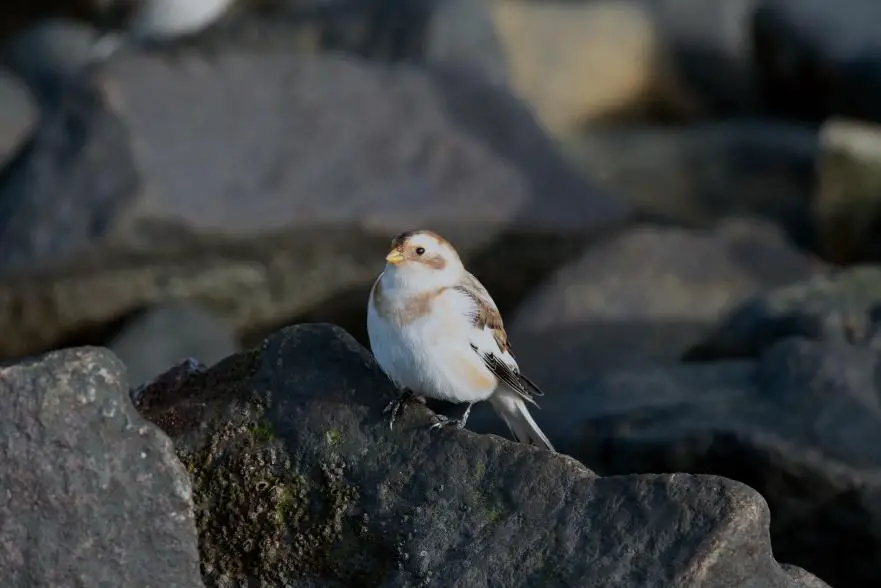
Snow bunting (Plectrophenax nivalis) was discovered at the North Pole in 1987 by a team of researchers, and hence it is included in our list of North Pole wildlife. There are just a few isolated populations of snow buntings south of the Arctic area, which breed in the circumpolar Arctic region.
The snow bunting is the only bird that can fly thus far into the Northern Hemisphere’s winters in the Arctic. Grass seeds and seaweed are the birds’ primary sources of food throughout the fall and winter months. Small Arctic plants like poppies, goldenrod, asters and others are harvested for their seeds in the summer. The snow bunting also eats invertebrates like butterflies, spiders, and flies during the warmer months.
Northern Fulmar
| Scientific Name | Fulmarus glacialis |
| Type of Animal | Bird |
| Diet | Carnivore |
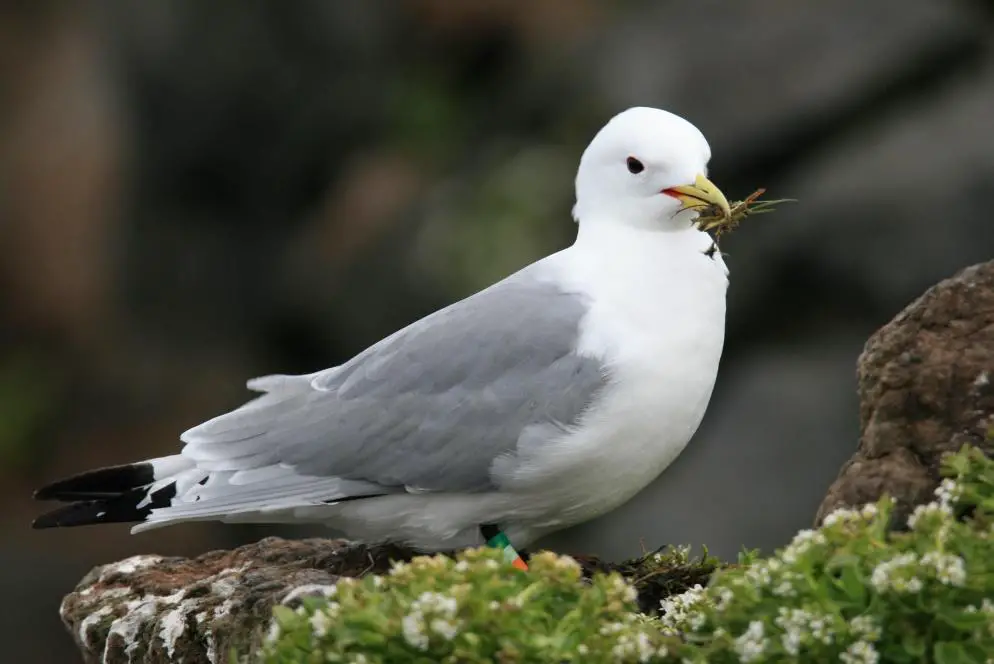
The northern fulmar (Fulmarus glacialis), like the kittiwake, is one of the birds that have been seen at or near the North Pole. The bird is often seen soaring across the North Pacific and Atlantic Oceans. The northern fulmar has a wingspan of 102 to 112 cm and weighs between 450 and 1,000 grams. It has grey and white colour on the body, yellow on the beak, and blue on the legs.
Lemming
| Scientific Name | Lemmus lemmus |
| Type of Animal | Rodent |
| Diet | Herbivore |
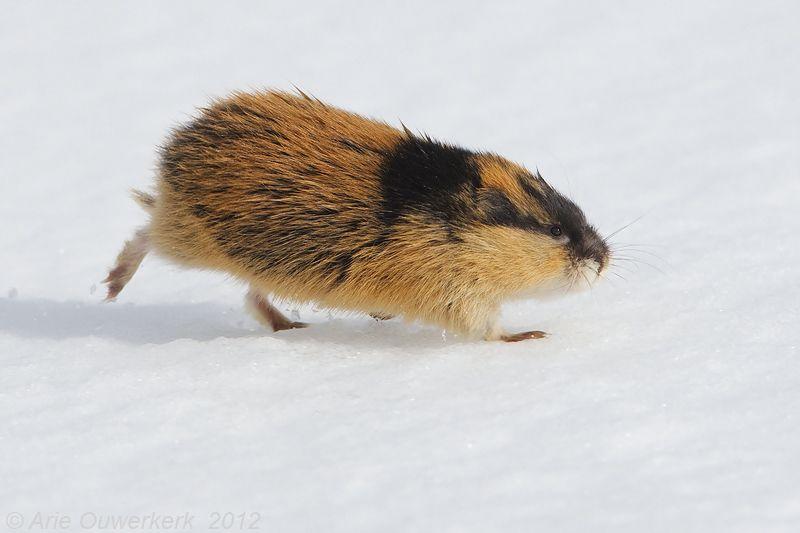
Lemmings are little rodents that dwell in large snow burrows. In one litter, a couple of lemmings may have up to 10 young. After one month, the young ones are ready to procreate, and they may have up to three litters every year. Lemmings would rule the world if all of their young lived and reproduced. Fortunately, Arctic predators, diseases, and a lack of plant food all work together to keep the lemming population under control. Lemming fur is used to produce clothes and doll attire by the Eskimos.
Wolverine
| Scientific Name | Gulo gulo |
| Type of Animal | Mammal |
| Diet | Omnivore |
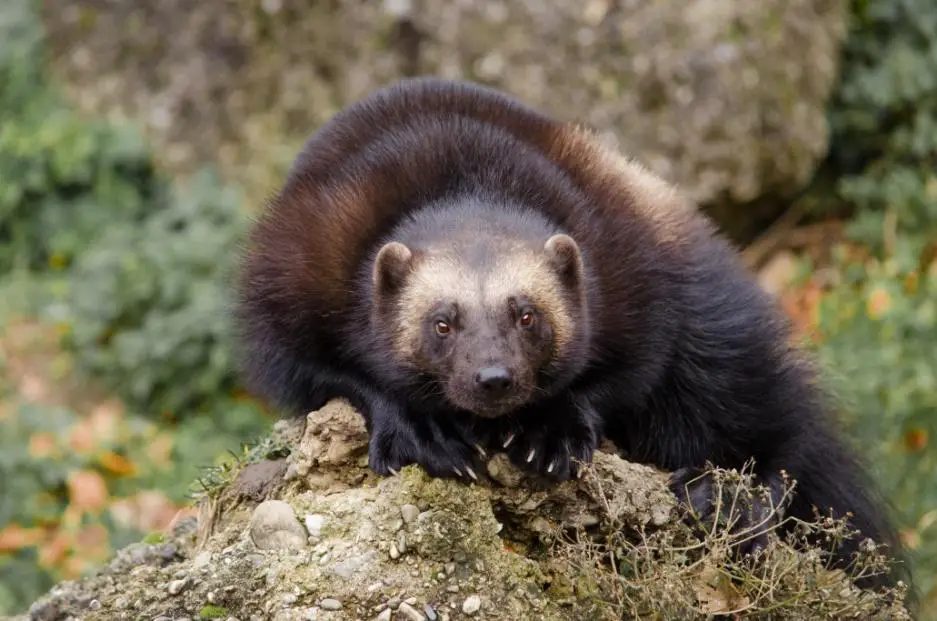
The wolverine is a medium-sized animal that is well-known for its strength and power. Wolverines eat birds, eggs, rodents, mice, and other small mammals in the summer, but when the ground is covered in snow in the winter, they turn to hunt bigger animals like reindeer (caribou) and sheep. Wolverines have enormous teeth and strong jaws, which they employ to smash massive bones and devour frozen prey flesh. A strong-smelling chemical known as musk is used by these animals as a warning to others to stay away from them. Wolverines are well-known for their thick brown fur, which helps keep them warm in the winter.
Dall sheep
| Scientific Name | Ovis dalli |
| Type of Animal | Mammal |
| Diet | Herbivore |

Dall sheep are another prominent North Pole inhabitant. Dall sheep have gorgeous curving horns that develop for up to eight years. These horns are formed of keratin, the same substance that makes up our fingernails. The number of growth rings on the sheep’s horns may be used to estimate their age. Dall sheep have hollow hair that helps to shield them from the cold.
Dall sheep are herbivores that consume moss and other tiny vegetation. Dall sheep are hunted by locals and hunters for their flesh. Dall sheep are now on the verge of extinction owing to a lack of food supplies and overhunting, and their numbers are being closely watched by biologists.
Polar Bears
| Scientific Name | Ursus maritimus |
| Type of Animal | Mammal |
| Diet | Carnivore |
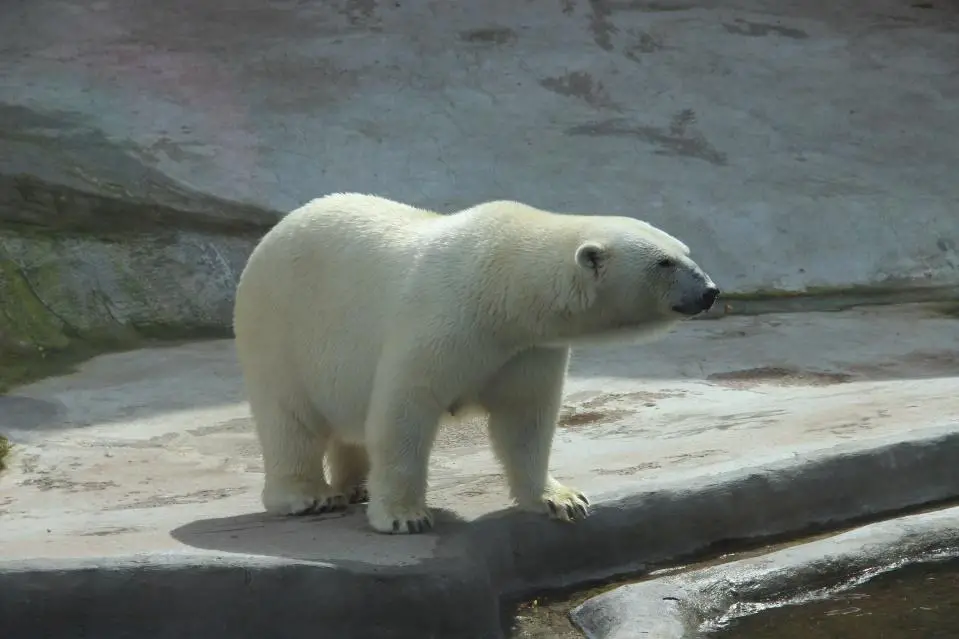
Polar bears are among the North Pole’s biggest terrestrial mammals. They’re the world’s largest land carnivores, with males reaching up to 10 feet in height and females being around half that size. Polar bears have black skin, despite their appearance. The see-through fur that covers their black skin helps them blend in with the chilly surroundings. Their sense of smell is incredible; they can detect a seal from over a mile away.
Polar bears can swim quite well. Their paws have been uniquely designed for paddling, and they steer with their rear legs. They can swim at speeds of up to 6 mph and may go for days without stopping. Despite their striking appearance, they have a poor hunting success rate. Only around 2% of their hunting excursions result in a kill. So, they have to be resourceful and often steal food from nests or eat small animals to get by between meals.
Arctic Hares
| Scientific Name | Lepus arcticus |
| Type of Animal | Mammal |
| Diet | Herbivore |
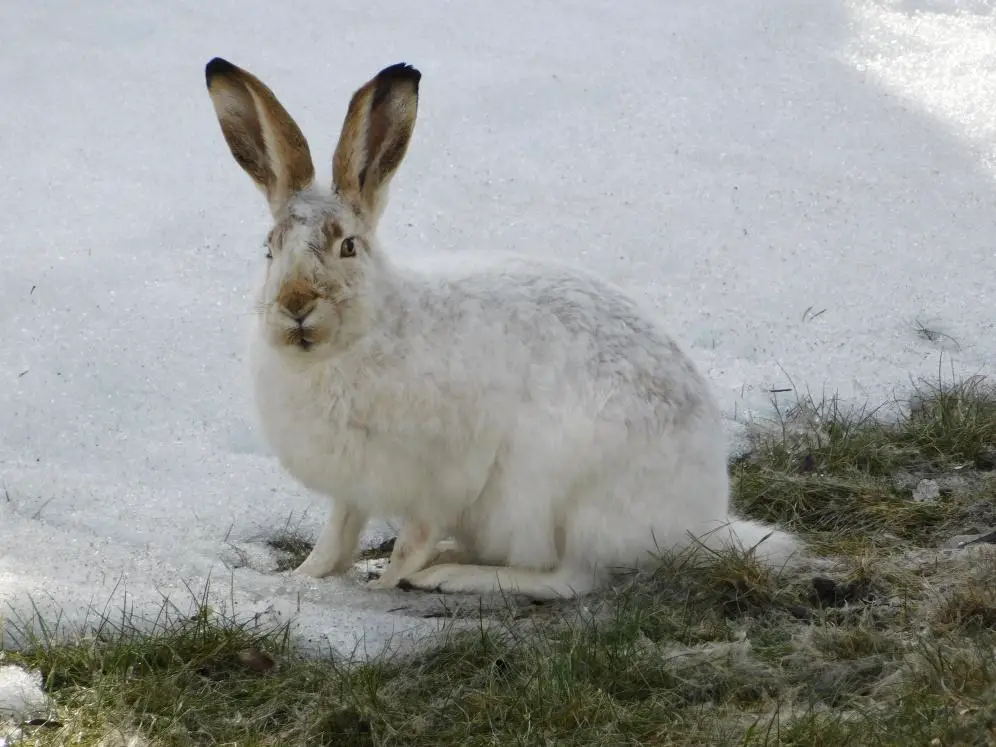
Arctic hares excavate snow-covered burrows. Even though they’re significantly larger, their ears are shorter than those of the common pet rabbit. Throughout the year, they become a different color. To better fit in with the land’s rocks, their fur becomes bluey-grey in the summer. In the winter, when it snows severely, their fur becomes white, allowing them to remain invisible.
They must avoid polar foxes, which will kill and consume them if discovered. Hares in the Arctic may run up to 40mph while fleeing from predators. To keep an eye out for predators, Arctic hares will stand on their hind legs.
Arctic Foxes
| Scientific Name | Vulpes lagopus |
| Type of Animal | Mammal |
| Diet | Carnivore |
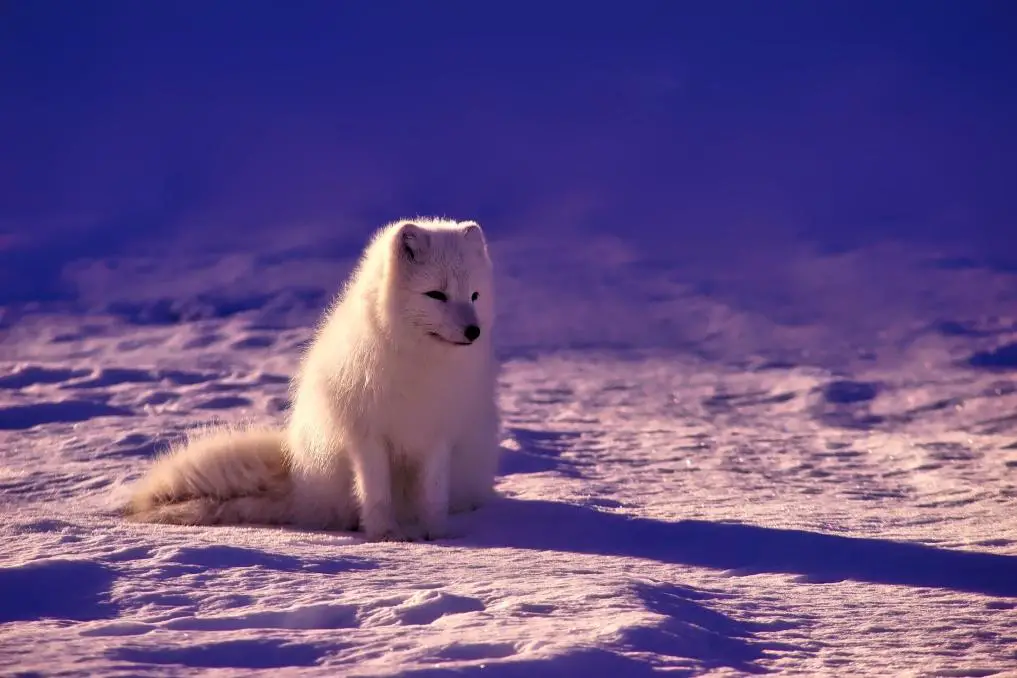
Arctic foxes, like their food, the Arctic hare, have ever-changing coats of hair. Arctic foxes have the finest insulation in the Arctic because of their thick, warm hair. In their burrows, they curl up into their long, bushy tails as if they were sleeping. Arctic foxes may occasionally follow polar bears and eat the bear’s leftovers rather than go hunting for their own food to save energy. Plants and eggs may also be eaten by them.
The burrows of arctic foxes are large and well-equipped. Some of them cover an area of 500 feet or more and have over one hundred entrances to their complex. Their noses are as sensitive as polar bears, so they can find a seal’s den from more than a mile away.
Snowy Owls
| Scientific Name | Bubo scandiacus |
| Type of Animal | Bird |
| Diet | Carnivore |
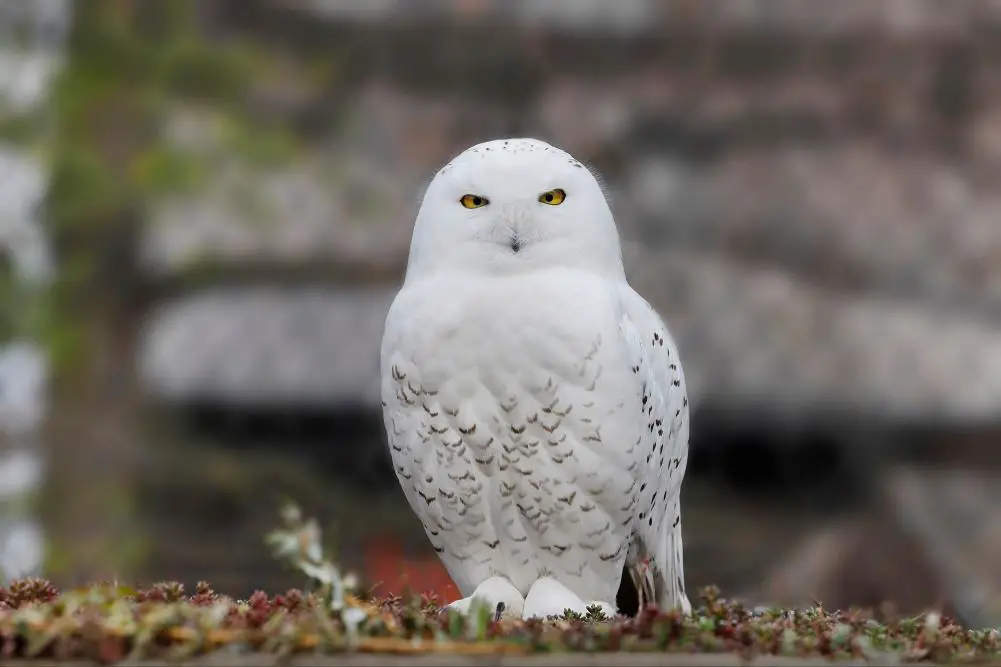
As there are no trees in the Arctic, snowy owls perch on rocks to hunt. Lemmings (a kind of tiny rodent) are their favorite meal, and they may consume up to 1,600 a year. Small animals like rabbits, rats, and arctic hare, as well as birds and fish, are among the things they eat.
However, unlike many other owls, snowy owls may be seen both during the day and night. This owl, which is the heaviest in North America, can easily topple an adult person. Unlike other birds, the legs and feet of the snow owl are coated with feathers for warmth. Generally speaking, men are lighter in color than females, yet females never reach their full white potential.
Reindeer
| Scientific Name | Rangifer tarandus |
| Type of Animal | Mammal |
| Diet | Herbivore |
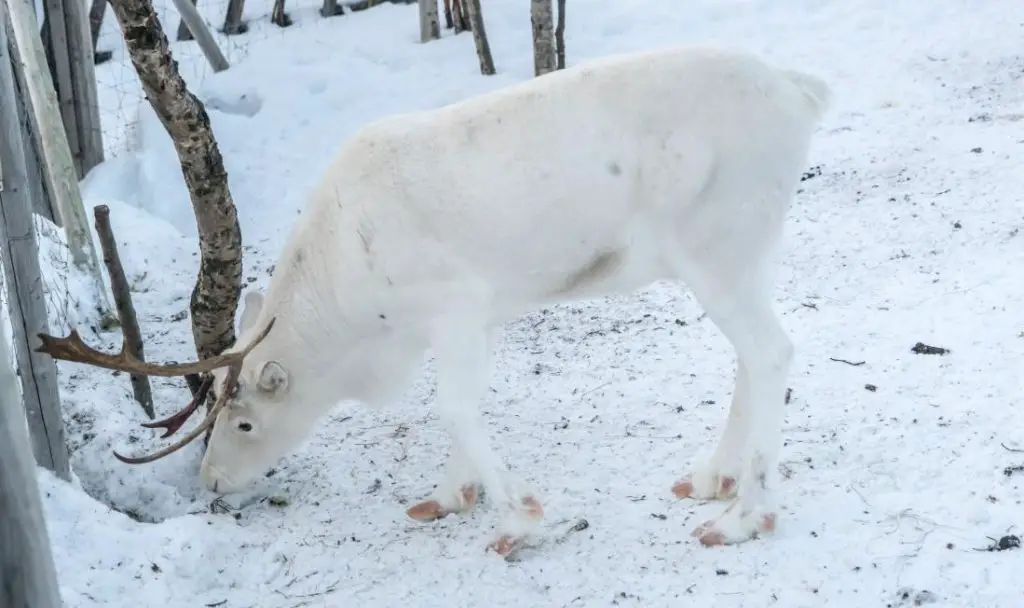
Reindeer is an excellent example of herbivorous North Pole animals since they consume solely vegetation. They dig through the snow with their antlers (both males and females have antlers) to locate vegetation. They migrate south in the winter because it becomes too cold for them to live. They can walk on ice and rocks because of their keen hooves.
Reindeer do, in fact, have red noses. This is because their nostrils have many capillaries that convey oxygen-rich blood. Reindeer use their complex network of capillaries in the nose to help them control their body temperature. Reindeer live in herds and are quite friendly. These herds may be massive, with up to 500,000 reindeer migrating 1,000 to 3,000 kilometers south in the winter to seek milder conditions.
Ringed seals
| Scientific Name | Pusa hispida |
| Type of Animal | Mammal |
| Diet | Carnivore |
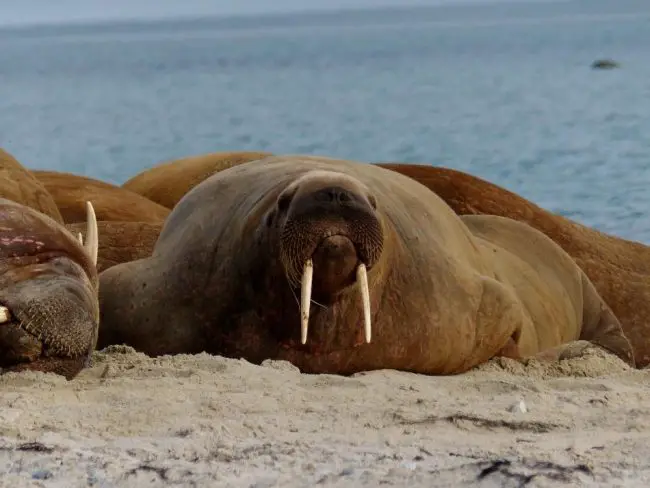
In the Arctic and sub-Arctic areas, the earless ringed seal (Pusa hispida) is found. Researchers have found that these seals can survive even the harshest of winters, as shown by the fact that they have been found as far north as the North Pole. In marine environments, they eat fish and invertebrates. The polar bears, Arctic foxes, sharks, whales, and walruses are all predators of these seals.
Are There Any Animals That Live on both Glaciers and the North Pole?
There are no animals found on glaciers or specifically on the North Pole. The extreme cold temperatures and harsh conditions make it difficult for any living creatures to survive. However, some Arctic animals like polar bears and seals are known to roam in the vicinity of glaciers, but they do not inhabit the glaciers themselves.
Walruses
| Scientific Name | Odobenus rosmarus |
| Type of Animal | Mammal |
| Diet | Carnivore |
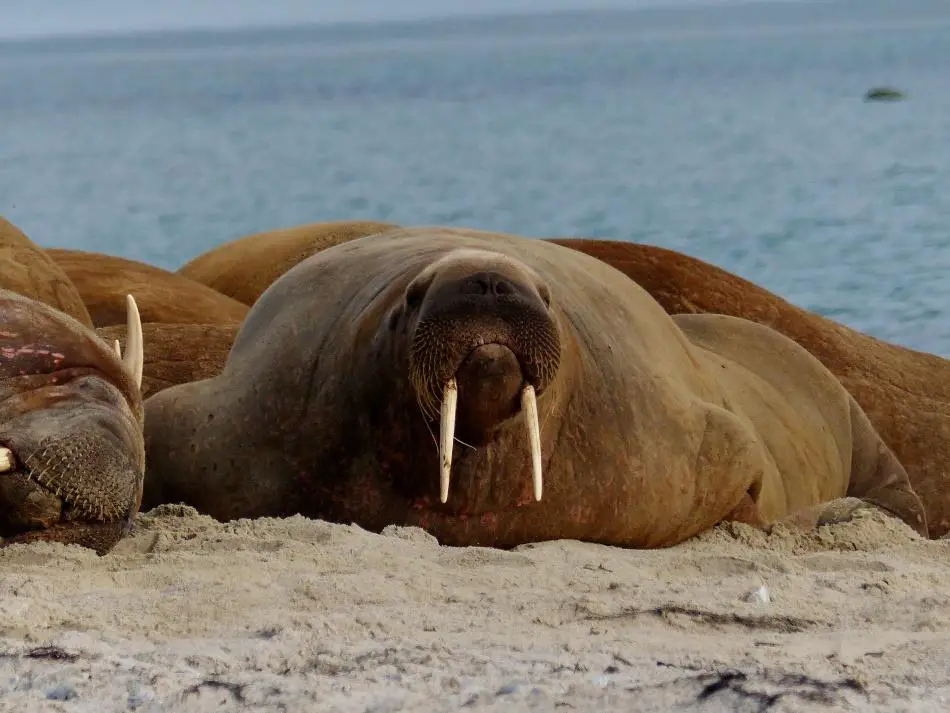
Walruses are found in the Arctic and sub-Arctic areas of the planet, close to the North Pole. Male and female walruses have enormous tusks that set them apart from other sea animals. Also, walruses are rather fat. They may reach a weight of 1.5 tonnes when completely grown. They form large ice floes because they are very sociable creatures. They use their tusks to cut through the ice, get themselves out of the water, and defend themselves against predators with their massive whiskers and tusks. Walruses have an average lifespan of forty years. As opposed to seals, they don’t go too far out into the open ocean. Worms, snails, and sea cucumbers are all they need to satisfy their appetites in shallow water.

